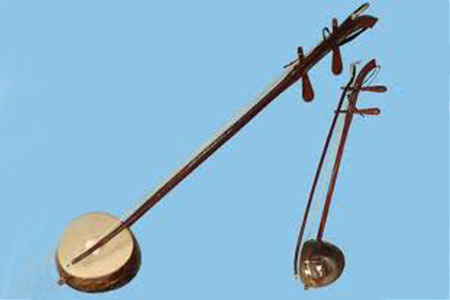Dan nhi is a simple instrument that can achieve miracles. A folksong of the north, a lullaby of the centre, or a cai luong aria of the south will lose much of its charm if not accompanied by the dan nhi, a traditional instrument capable of a great variety of expression.

The dan nhi is a bow instrument with two strings, commonly used among the Viet ethnic group and several national minorities: Muong, Tay, Thai, Gie Trieng, Khmer. The dan nhi comprises a tubular body made of hard wood with snake or python skin stretched over one end and a bridge. The neck of the dan nhi has no frets. Made of hard wood, one end of the neck goes through the body; the other end slants slightly backward. There are two pegs for tuning. The two strings, which used to be made of silk, are now of metal and are tuned in fifths: C-1 D-2; F-1 C-2; or C-1 G-1.
The bow is made of bamboo or wood and fitted with horsehair. The hair goes through the space between the strings. The tones of the dan nhi range over two octaves, from C-1 to C-3. In drawing the bow, the player uses various techniques, including legato, vibrato, staccato; combined with his fingering of the strings he can produce trills, glissando, rapid runs, etc.
The dan nhi is a highly expressive instrument which plays an important solo and orchestral-role.